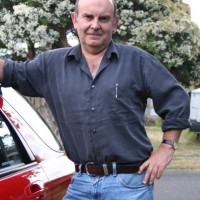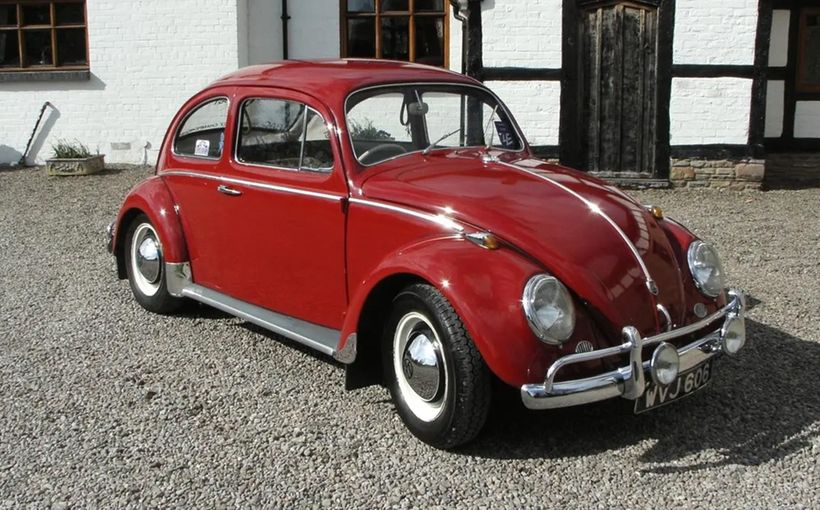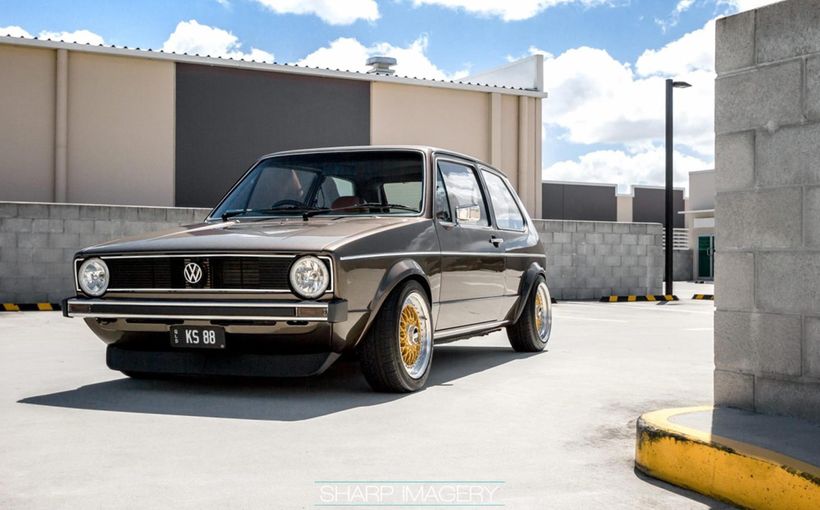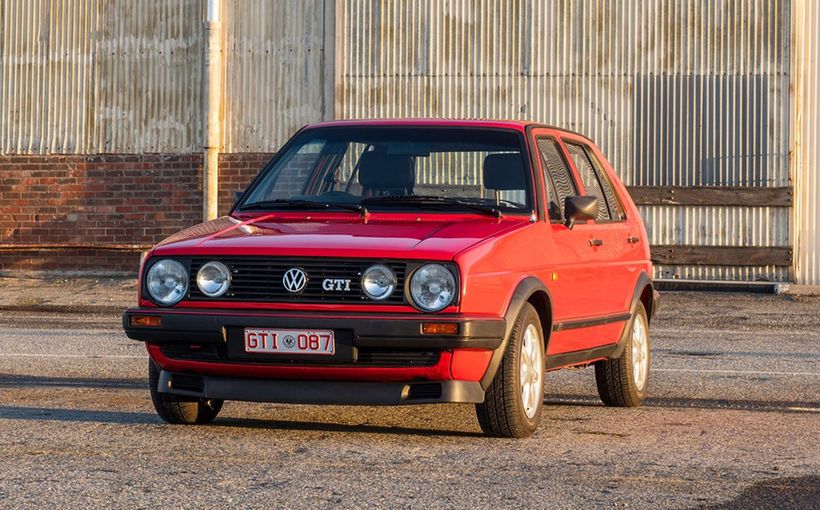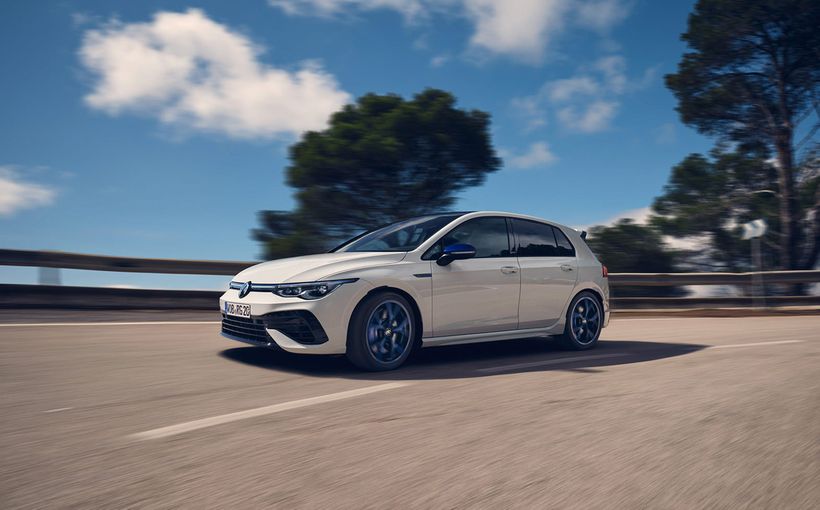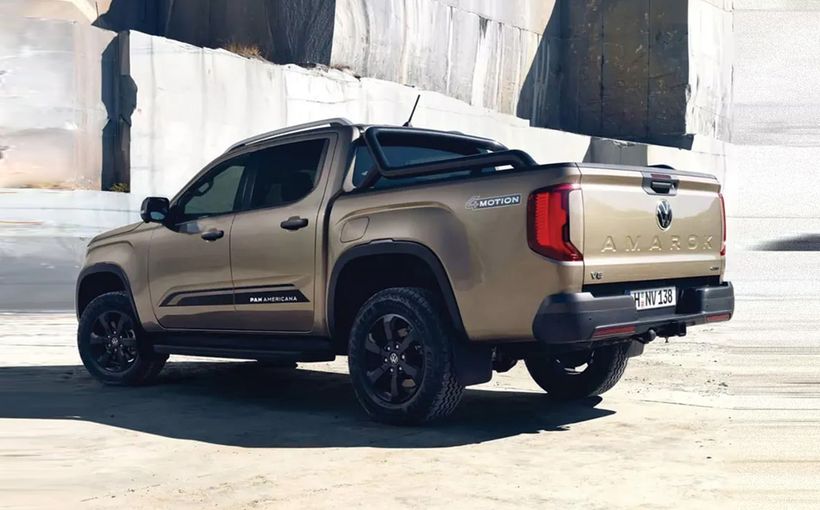1963-68 VW Type 3: The Other Aussie VW Turns 50

1963-68 VW Type 3: The Other Aussie VW Turns 50
The Type 3 was Volkswagen’s first all new passenger car ever and Australians were amongst the first outside Germany to get it. Aimed at stopping Beetle owners from shopping elsewhere for extra refinement and style, a unique local version was rushed into local production in July 1963. Australian buyers then generated the highest per capita Type 3 sales in the world.
In a bid to make its rapidly growing Australian operations more viable, Volkswagen sent evaluation examples to Australia as early as 1962. Following universal praise, it was released as an import in February 1963 at a price almost 10 per cent higher than a Holden EJ Special. By the end of that year, the EH Holden had become the new Australian benchmark and life became even more difficult for the new VW.

In a bid to contain its launch price of 1199 Aussie quid or $2398, tooling had been rushed from Germany for local production. Even though local production commenced in July 1963, local suppliers were still gearing-up to supply parts unique to the Type 3. Built on a separate production line, the Type 3 merged with the Beetle before it was completed for final tests and inspection. The arrival of the EH, the Valiant, Austin Freeway and more affordable four-door Europeans such as Fiat and Peugeot had suddenly made the segment very crowded.
By 1964, as full local manufacture of the Beetle ramped-up, Volkswagen could shave another $200 off the Type 3 price making it an even more attractive proposition. The big winner was the wagon version which despite its extra weight and structure, attracted only half the price premium above the sedan compared to rivals. It rapidly became the Type 3 of choice and the third biggest selling wagon in Australia at the time.

What is a VW Type 3?
Often billed as the big new Volkswagen, the Type 3 was actually built on the same wheelbase as the Beetle on a platform chassis that was very similar but not identical. For the record, the Type 1 was the Beetle and Type 2 was the Kombi/Transporter.
The first Karmann-Ghia was based on a modified Type 1 Beetle platform. There was a striking second generation Karmann-Ghia based on the Type 3 but confusingly, it was outlived by the Type 1 Karmann-Ghia which picked up several Type 3 body details in later years.

There was also a Type 4, a larger four door passenger car that some believe was intended to be a Renault 16-style front drive liftback but ended up reaching the market with a Type 3 mechanical layout in a brand new unitary construction body with coil spring suspension all round. Although several evaluation examples reached here, they were not officially offered by Volkswagen Australia and not to be confused with the Type 3, especially the wagon version which looks similar but is a very different car under the skin.
All Australian-built Type 3 models retained similar transverse torsion bar suspension and rear swing axles to the early Beetles. Later Type 3 automatics switched to the same double-jointed rear suspension as the semi-automatic Beetle. This occurred only after local manufacture had ended in 1968 and VW Australia switched to CKD assembly of the current German specification.
The Type 3’s big advance was its new body styling which in turn was driven by a totally new way of packaging the air-cooled flat-four engine.

Very different from the Beetle, the new body added extra overhang front and rear while covering the extremities of a wider platform chassis and its attachments. By bringing the running boards and separate front and rear guards inside the main body, the Type 3 generated a huge increase in cabin and luggage space. The rear seat could also be widened with extra headroom and legroom. The Type 3 was now a genuine adult four seater (or a squeezy five) without a big increase in external size.
In Australia, it was always an intellectual choice to buy a Type 3 as it looked quite plain in the showroom at the price. Its lack of rear doors demanded an extra commitment from family buyers who would normally get four doors and a bigger car for the same money.
Although VW experimented with a four-door Type 3, it never reached German or Australian production but a variation was sold in Brazil. Would the Type 3 have been a big seller locally with an extra set of doors?
It is on record that VW Australian executives at the time believed that to be so. However, pictures of the four door prototype suggest that the extra doors would have changed the entire character of the car from being a slightly exotic two door to just another undersized four-cylinder four-door sedan trying to do battle with a Holden.
The notion of the Type 3 sedan providing a taste of the exotic had real currency in 1963 in Australia. To many local buyers, it was the more practical, more affordable and more powerful four seater coupe alternative to the Type 1 Karmann-Ghia coupe. The Type 3 notchback sedan, as it was later known, had a centre-pillar coupe look that was lost in the four door concept. This would also explain why the later fastback version was relatively successful.

Australian conditions were still tough enough for local buyers to value the Type 3’s extra refinement and presence as it still came with the Beetle’s long distance durability, rough road ride and grip, traction, air-cooled engine and high ground clearance. This aspect was critical to the Type 3’s local sales pitch as this combination was unrivalled this side of a Porsche.
The really clever part was Volkswagen’s “suitcase” motor which allowed a conventional three box sedan with two boots and two box wagon styling with a front boot as a bonus. Not only did this entice buyers ready to move up from a Beetle, it also attracted new VW buyers who valued the Beetle’s achievements but were wary of the ageing styling.

In 1963, not everyone was seduced by the Beetle’s cuteness especially when it looked more like one of the many 1930s and 40s designs still left on Aussie roads. Because of the enormous respect for the Beetle’s outback performance and durability combined with the well-publicised switch to local manufacture, the Type 3 arrived to a more receptive local market than most new European models.

The Suitcase Engine
As cutaways of the day showed, the Type 3 engine was no higher than a suitcase, an approach that the Porsche Boxster validates to this day. By developing a special carburettor and replacing the Beetle’s tall belt-driven fan located above the clutch end of the engine with a more compact fan at the nose of the crankshaft, the engine could be located under a boot floor.
Discreet cooling vents at the base of the sedan’s rear screen and in the rear quarters of the wagon took care of air-flow in the engine bay. Under more extreme conditions, the Type 3 engine could run hotter affecting engine life and hot weather starting but for most Australians there were few downsides to this new layout.
The clever part was the creation of two boots, a feature that continued into the Type 4. Although the Type 3’s front boot was bigger than the Beetle’s and the new rear boot over the engine bay was quite long, luggage space was shallow. The extra length in the front boot added extra crush space ahead of the fuel tank still mounted close to the front occupants.

The wagon benefitted most from the new layout as it could offer the usual wagon flexibility plus a front boot.
However, the wagon’s extra sheet metal, glass and big liftback added significant weight and that’s before owners took advantage of the big increase in carrying capacity. This provides an insight into why and how the local Type 3 wagon’s mechanicals were constantly changed over a short time.
Careful development kept engine heat and noise from penetrating the engine cover above it for one of the quietest and most relaxed touring cars of its type on the market. The other Type 3 advances included a proper fresh-air heating and ventilation system, a padded dash, better front seats with extra adjustment and class-leading vision.
The more even spread of weight and lower centre of gravity seemed to tame the twitchy oversteer of the Beetle if not its side-wind sensitivity. It left the Type 3 with an amazing point to point ability over rough roads that few cars at any price could match.
Last but not least, the engine had been stretched to 1.5-litres with a boost in power from the Beetle’s 40bhp/30kW to 53bhp/40kW. It still wouldn’t pull a skin off a sago as they would say in 1963 but its torque peak at just 2000rpm was more like a six hence its outstanding touring ability with its overdrive fourth gear ratio.

The holders of a 1962 round Australia record swapped to a VW 1500 sedan a year later to blitz their 1962 time and covered the 12,951km in 5 days, 22 hours and 17 minutes at an average of 91 km/h. It remains the unchallenged record today as it was declared illegal to engage in such activity afterwards.
The 1964 Ampol Trial further verified that the Type 3 was part of the unbreakable VW round-Australia tradition with a Team prize awarded to three 1500S models. Although a Cortina GT won, a VW 1500S was equal second with an EH Holden 179M followed by another VW1500S.The third car was 14th. No other model was as consistent in the event. It was all Australians needed to confirm that the Type 3 was a genuine VW and a better one at that.

Australian Type 3 Manufacturing History
1963: Australia became the first RHD market to be offered the Type 3. The initial imports from February, sedans and wagons, were distinguished by their side parking lights, amber front indicators, bumper overriders, lack of stainless steel side strip, opening rear side windows, centre rear armrest and tweed-style cloth trim. They were replaced by the local version from July 1963.

Early local cars, also amongst the first to be built outside Germany, had vinyl trim, simpler door trim with pull type armrest, full length stainless steel strip, deleted over riders and no side lights but the amber front indicators. It was an Australian variation of a base German spec that supplemented the new German 1500S. The sedans had fixed side rear windows but all local wagons retained the opening rear side glass (behind the doors but not the rear quarters).

1964: Australian content went up a notch. Lever heater controls replaced the early twist knobs and clear front indicators were fitted as local parts came on stream. Sedan price was cut from 1199 pounds/$2398 to $2198. The 1249 pounds/$2498 wagon price was cut to $2378. In June, the latest twin-carburettor 1500S arrived as an imported sedan establishing the design cues for later top level Type 3 models. These included the horizontal front indicators in amber, bright trim strip on the leading edge of the front bootlid, full wheel trims, bumper over riders, full length side strip with side repeater/parking lights, larger wraparound tail lights, larger chrome rear reflector housings and cloth trim. It also featured the upper level door trims. At 1329 pounds/$2658, it was regarded as an expensive but quality alternative to its 1.5-litre rivals. Power went up from 53bhp/40kW to 65bhp/48.5kW but torque stayed the same. In September, the Type 3 Karmann-Ghia was introduced as an import with 1500S mechanicals.

1965: The imported 1500S was re-packaged as the upmarket Twin S version of the local 1500. Over the local 1500, it featured the twin carburettor 1500S engine, better quality local soft-feel expanded vinyl trim, the larger tail lights, the chrome S trim on the rear number plate light and full wheel covers while retaining the standard side strip, more basic local door trim/pull armrest design, standard rear reflectors and standard front appearance. Two tone paint and white wall tyres were optional. Price was slashed to 1179 pounds/$2358, something of a bargain when the essentials stayed in place.

Wagon popularity ensured that a 1500 Twin S wagon followed in September. A panel van version with no rear side glass and dark wooden floor was offered in limited numbers after September. It was made up of a combination of local and imported parts and reflected the base German spec with no side strips and basic cabin trim.

1966: After two privately imported Type 3 1600 TL Fastbacks (one was the blue NSW example as featured on the May 1966 Wheels cover) reached Australia, a local TS version was offered in April 1966 without the TL’s disc brakes, opening side windows, rear camber compensator and side repeater lights for just $2415.

Outstanding value, TS sales were initially strong as it still featured the TL’s new 1600 engine with twin carburetors for a useful boost in torque, the top shelf front indicators and front bootlid garnish, wheel trims, bumper over riders, upper level door trim/armrests, extra rear boot space and special expanded vinyl seat trim with textured ventilated inserts. A TS badge replaced the side repeater/parking lights of the TL.

This new model forced a revamp of the Type 3 range as there were now three different engines including two twin-carb versions that produced similar power but different torque. There were also now three very different levels of trim.
The 1500 was repositioned as an entry level 1500 N as a sedan only with the earlier tail light style and single carburettor engine. The 1500 Twin S continued as a sedan and wagon while the new 1600 twin-carb engine was exclusive to the TS Fastback. This duplication could not continue.

A very desirable vehicle today, the Type 3 van was six years ahead of the local panel van trend which would have embraced this model had there been many still left on the road. Most Type 3 vans were thrashed and worn out and had disappeared by then.
1967: In a last ditch effort to keep the local factory open after sales stalled in 1966, the Type 3 shared new colours and trim with the local Beetle upgrade. The range was again rationalized for the best value and most comprehensive Type 3 range thus far. Both Twin S models were withdrawn.
In February, the entry 1500 sedan was upgraded with similar textured upholstery to the Australian 1300 Deluxe Beetle and full carpeting. Renamed the 1500 Deluxe, it also featured the larger tail lights and was the only notchback sedan still offered and catered for those ready to step up from a Beetle with a minimal premium.
A new 1600 Squareback wagon replaced all previous Type 3 1500 wagons by combining the new local trim level of the 1500 Deluxe sedan with the twin-carb 1600 engine of the TS Fastback. Externally, it featured the same detailing as the 1500 Deluxe including the plainer front and round clear indicators but offered extra performance to counter the wagon’s extra weight and carrying capacity. The Twin S wheel trims became optional.
A local 1600 Deluxe notchback sedan joined the wagon at the close of 1967 and offered the extra TS performance without the detailing at a lower price.

1968: In April, the 1500 Deluxe sedan was quietly withdrawn as the 1500 Beetle was first offered as an import with front disc brakes and 12 volt electrics. As local production was progressively shut down from the end of 1967, several hybrid specification Types 3s reached the market as CKD kits replaced the locally manufactured models. These cars ultimately reverted to the latest German specification including external fuel fillers, 12 volt electrics, front disc brakes and four stud wheels although trim and paint remained similar. The upper level side repeater/parking lights, horizontal amber front indicators, extra chrome trim at the front and bumper over riders were also progressively restored.

What Happened to the Type 3?
By 1969, the transition to CKD assembly of the current German Type 3 range was complete. VW was now ready for the November 1969 introduction of the first and only Type 3 body facelift with its extended nose, bigger tail lights and impact bumpers. The fastback switched from the local TS to the German TL series.
After fuel injection was added to a special TLE fastback in June 1970, flow-through ventilation was introduced across the range in February 1971.
New ADR requirements then prompted further improvements including high back seats and a steering lock in March 1972 before the range was withdrawn at the close of 1973.
The Type 3 was replaced in early 1974 by the comprehensive locally-assembled Wheels Car of the Year Passat range, a front-drive water-cooled model based on the Audi 80. The TS badge re-appeared on a high performance two-door Passat coupe. The fate of the Type 3 provided a preview of what was about to happen to the Beetle on the arrival of the first Golf.
The assistance of Chris Scane, VWCV Club Historian in proofing the above is acknowledged. VW archive photos from http://www.thesamba.com/vw/archives
Protect your Volkswagen. Call Shannons Insurance on 13 46 46 to get a quote today.


